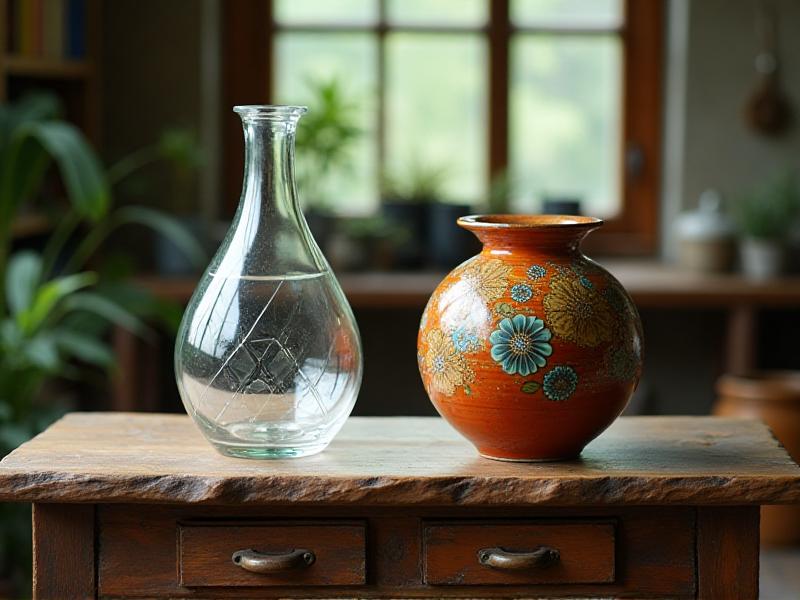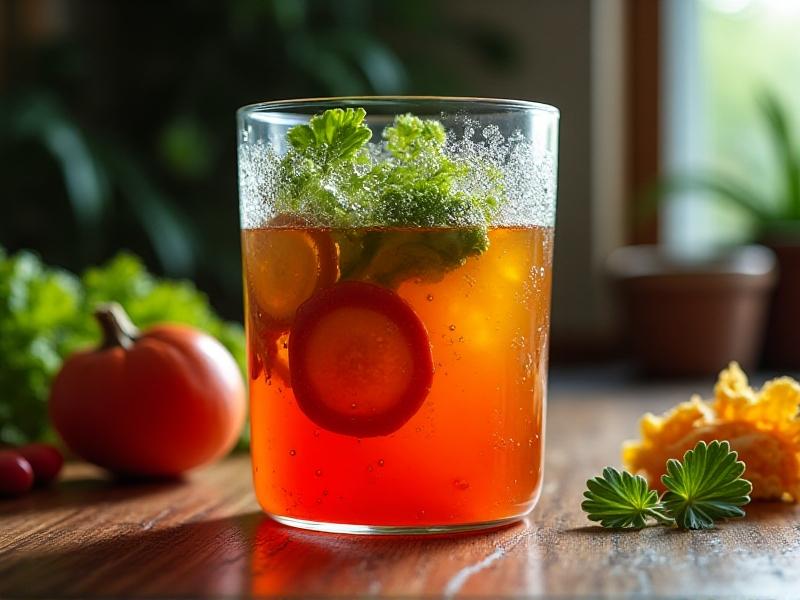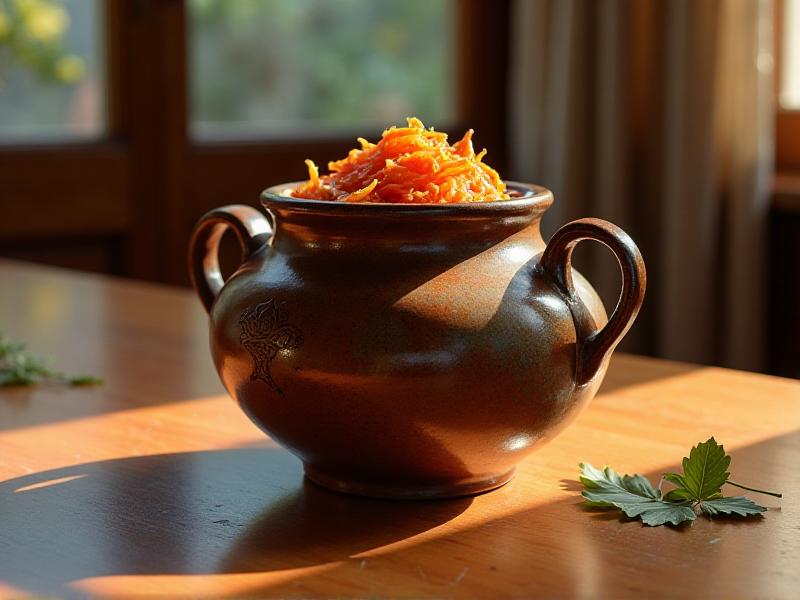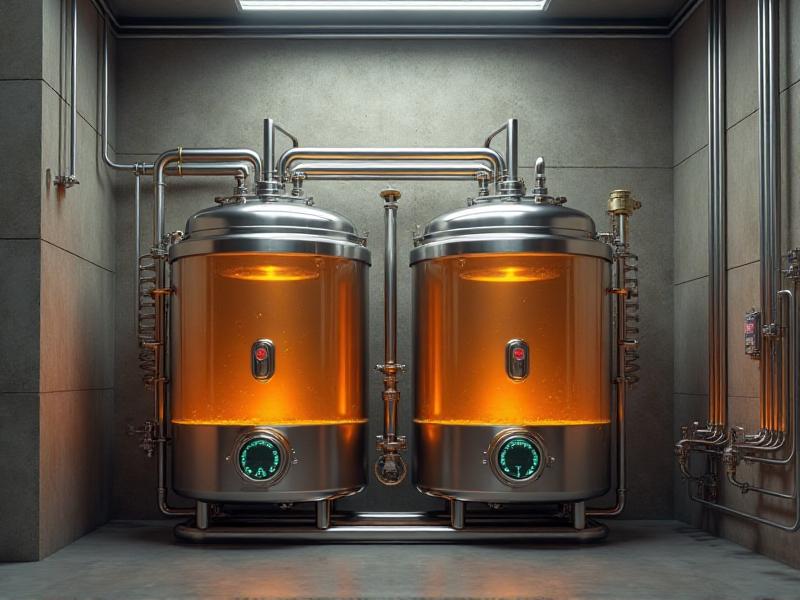Fermentation Vessel Material Comparisons (Glass vs Ceramic)
Introduction to Fermentation Vessel Materials
Fermentation is an ancient practice that has been used for centuries to preserve and enhance the flavors of food and beverages. The choice of fermentation vessel material plays a crucial role in the success of the fermentation process. Two of the most popular materials for fermentation vessels are glass and ceramic. Each material has its unique properties, advantages, and disadvantages that can significantly impact the fermentation outcome. In this article, we will delve into the characteristics of glass and ceramic fermentation vessels, comparing their performance, durability, and suitability for different types of fermentation.

Glass Fermentation Vessels: Transparency and Practicality
Glass fermentation vessels are widely favored for their transparency, which allows fermenters to monitor the fermentation process without opening the vessel. This transparency is particularly beneficial for beginners who need to observe the development of bubbles, color changes, and the formation of sediment. Glass is also non-porous, meaning it does not absorb odors or flavors, making it an excellent choice for fermenting a variety of foods and beverages. Additionally, glass is easy to clean and sterilize, which is essential for maintaining a hygienic fermentation environment. However, glass can be fragile and may break if mishandled, and it does not provide insulation against temperature fluctuations.

Ceramic Fermentation Vessels: Tradition and Insulation
Ceramic fermentation vessels have a long history and are often associated with traditional fermentation practices. Ceramic is an excellent insulator, helping to maintain a stable temperature within the vessel, which is crucial for consistent fermentation. The porous nature of ceramic can also be beneficial, as it allows the vessel to breathe, which can enhance the development of complex flavors. However, this porosity can also be a drawback, as it may absorb odors and flavors from previous fermentations, requiring thorough cleaning and seasoning. Ceramic vessels are generally more durable than glass but can be heavier and more challenging to handle. They are often preferred for fermenting foods like kimchi, sauerkraut, and miso, where traditional methods and flavor development are prioritized.

Comparing Durability: Glass vs Ceramic
When it comes to durability, ceramic fermentation vessels generally have the upper hand. Ceramic is less likely to break or crack compared to glass, making it a more robust option for long-term use. However, ceramic vessels can be more susceptible to chipping or cracking if dropped, and they may require more careful handling. Glass, while more fragile, is less prone to chipping and can be more forgiving in terms of everyday wear and tear. The durability of both materials also depends on the quality of the vessel and the care taken during use. For those who prioritize longevity and are willing to invest in a sturdy vessel, ceramic may be the better choice. However, for those who value ease of use and are careful with their equipment, glass can be a durable and practical option.
Temperature Control: Insulation Properties
Temperature control is a critical factor in fermentation, as it can significantly influence the rate and outcome of the process. Ceramic fermentation vessels excel in this area due to their insulating properties. The thick walls of ceramic vessels help to maintain a consistent internal temperature, protecting the ferment from external temperature fluctuations. This makes ceramic an excellent choice for fermentations that require a stable environment, such as those involving temperature-sensitive microorganisms. Glass, on the other hand, does not provide the same level of insulation. While glass vessels can be placed in a temperature-controlled environment, they are more susceptible to changes in ambient temperature. For those fermenting in environments with varying temperatures, ceramic may offer a more reliable option for maintaining the desired conditions.
Cleaning and Maintenance: Ease of Use
Cleaning and maintenance are essential aspects of fermentation vessel care, as they directly impact the hygiene and success of the fermentation process. Glass fermentation vessels are generally easier to clean due to their non-porous surface, which prevents the absorption of odors and stains. They can be easily sterilized using boiling water or a dishwasher, making them a convenient option for frequent use. Ceramic vessels, with their porous nature, require more thorough cleaning to remove any residual odors or flavors from previous fermentations. They may also need to be seasoned or treated before use to prevent contamination. While ceramic vessels can be more labor-intensive to maintain, they offer unique benefits in terms of flavor development and tradition. The choice between glass and ceramic will depend on the user's preference for convenience versus the potential for enhanced flavor complexity.
Flavor Development: Material Impact
The material of the fermentation vessel can have a significant impact on the flavor development of the fermented product. Ceramic vessels, with their porous nature, allow for a slight exchange of air, which can contribute to the development of complex flavors. This can be particularly beneficial for fermentations that rely on the activity of wild yeasts and bacteria, such as sourdough or traditional pickles. Glass, being non-porous, does not allow for this exchange, resulting in a more controlled fermentation environment. While this can be advantageous for maintaining consistency, it may limit the potential for flavor complexity. The choice between glass and ceramic will depend on the desired outcome of the fermentation. For those seeking a more traditional and nuanced flavor profile, ceramic may be the preferred option. For those prioritizing consistency and control, glass may be the better choice.
Cost Considerations: Budget and Investment
The cost of fermentation vessels can vary widely depending on the material, size, and quality. Glass vessels are generally more affordable and widely available, making them an accessible option for beginners or those on a budget. Ceramic vessels, on the other hand, can be more expensive due to their traditional craftsmanship and insulating properties. While the initial investment in a ceramic vessel may be higher, its durability and potential for enhanced flavor development may justify the cost for serious fermenters. The choice between glass and ceramic will depend on the user's budget and long-term goals. For those looking to experiment with fermentation without a significant financial commitment, glass may be the more practical choice. For those willing to invest in a high-quality vessel that offers additional benefits, ceramic may be worth the investment.
Environmental Impact: Sustainability Factors
The environmental impact of fermentation vessel materials is an important consideration for eco-conscious fermenters. Glass is a recyclable material, and its production has a relatively low environmental impact compared to other materials. However, the fragility of glass can lead to more frequent replacements, potentially increasing waste. Ceramic, while not as easily recyclable, is a durable material that can last for many years with proper care, reducing the need for frequent replacements. The production of ceramic vessels, especially those made using traditional methods, can also have a lower environmental impact compared to mass-produced glass vessels. The choice between glass and ceramic will depend on the user's priorities regarding sustainability and durability. For those looking to minimize their environmental footprint, ceramic may offer a more sustainable option in the long term.
Choosing the Right Vessel for Your Needs
Ultimately, the choice between glass and ceramic fermentation vessels depends on a variety of factors, including the type of fermentation, personal preferences, and practical considerations. Glass vessels offer transparency, ease of cleaning, and affordability, making them a great choice for beginners or those who prioritize convenience. Ceramic vessels, with their insulating properties, traditional appeal, and potential for enhanced flavor development, are ideal for more experienced fermenters or those looking to explore traditional methods. By considering the specific needs of your fermentation projects and weighing the pros and cons of each material, you can make an informed decision that will help you achieve the best possible results. Whether you choose glass or ceramic, the key to successful fermentation lies in understanding the characteristics of your vessel and how they influence the process.








